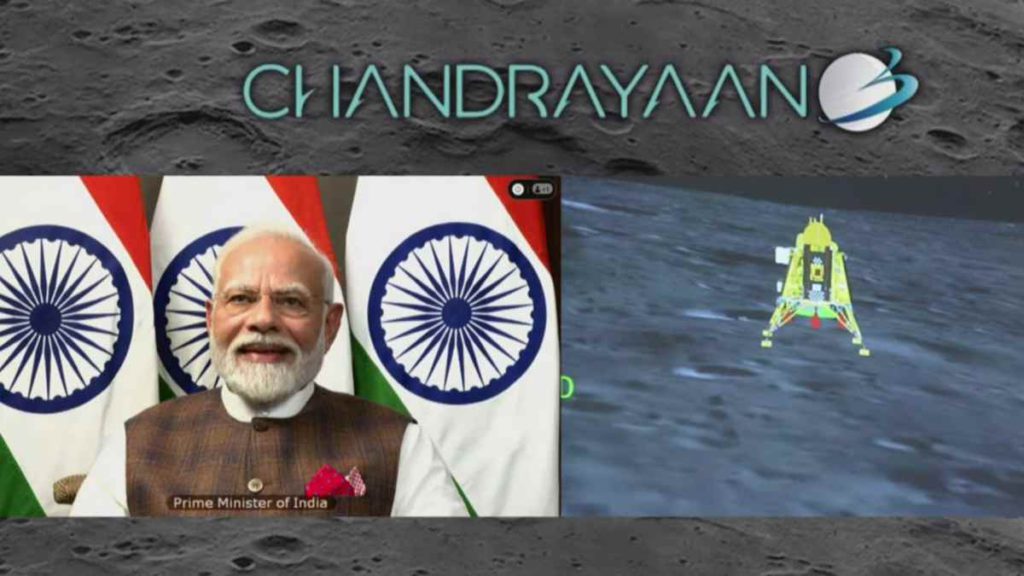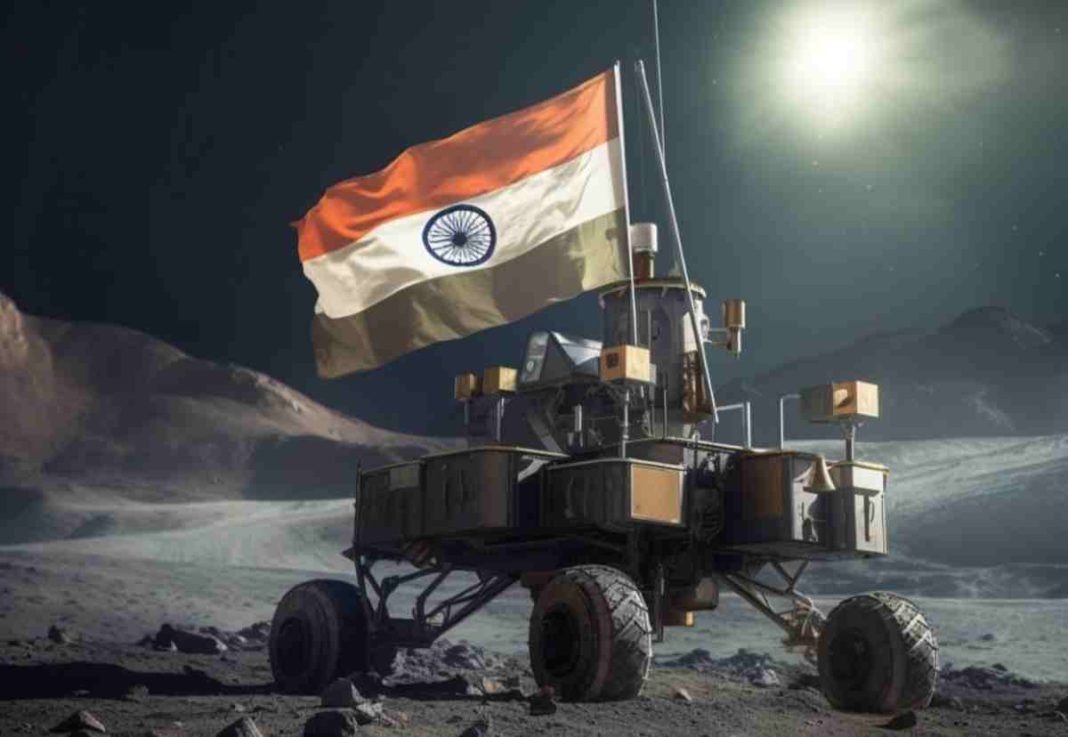INDIA: India achieved a historic milestone by becoming the first country to successfully land on the lunar South Pole. The entire nation erupted with joy as Chandrayaan-3 successfully achieved a soft landing at Moon at around 18:04 IST. Prime Minister Modi extended his congratulations to the Indian populace and the dedicated space scientists behind this remarkable accomplishment.

The mission faced its most critical phase during the final moments of landing. Approximately 20 minutes prior to touchdown, ISRO (Indian Space Research Organisation) initiated the Automatic Landing Sequence (ALS).
This crucial step empowered the Vikram Lunar Module (LM) to assume control, utilizing its onboard computers and intelligent algorithms to identify an optimal landing location. With these capabilities, Vikram LM executed a gentle and precise landing on the lunar surface.
Now that the spacecraft is on the Moon, it is set to explore the southern polar region of the Moon and conduct various scientific experiments. Here’s a breakdown of what Chandrayaan-3 will now do on the Moon:
1. Study of Exoplanets (SHAPE): The propulsion module of Chandrayaan-3 carries an experiment called SHAPE, which stands for Spectro-polarimetry of Habitable Planet Earth. This experiment aims to study starlight passing through the Moon’s atmosphere to detect changes that a life-supporting atmosphere might cause. This research will contribute to the search for Earth-like, habitable planets, aligning Chandrayaan-3 with the efforts of prestigious space agencies like NASA and ESA.
2. Analyzing Lunar Rumblings (ILSA): The Lander Module of Chandrayaan-3 houses an instrument known as ILSA, or Instrument for Lunar Seismic Activity. ILSA’s primary purpose is to detect and study lunar quakes, which are vibrations beneath the Moon’s surface. The experiment aims to confirm the relatively calm nature of the Moon compared to Earth, potentially paving the way for setting up advanced instruments like the Laser Interferometer Gravitational-Wave Observatory (LIGO) on the lunar surface. LIGO detects gravitational waves resulting from significant cosmic events.
3. Plasma Activity on the Moon (RAMBHA and Langmuir Probe): Chandrayaan-3 also carries two instruments, RAMBHA and the Langmuir Probe (LP), to study near-surface plasma activities on the Moon. Plasma, composed of charged particles, plays a crucial role in space environments. Studying plasma activities is vital for future lunar exploration, especially if humans are to spend extended periods on the Moon or utilize it as a base for interplanetary travel. Understanding plasma formation and behavior is crucial for mission safety and success.
4. Chandra’s Surface Thermo-Physical Experiment (ChaSTE): ChaSTE is another essential payload that focuses on studying the thermal behavior of the Lunar surface. By analyzing how the lunar surface responds to temperature changes, ChaSTE will provide valuable insights into the geological history of the Moon. This information can be compared with Earth’s geological history, enhancing our understanding of both planets.
5. Estimating Lunar Dynamics (LASER Retroreflector Array): Supplied by NASA, the LASER Retroreflector Array serves as a critical payload for Chandrayaan-3. It enables real-time distance measurements between the Moon and Earth. This data is crucial for understanding the Moon’s orbital dynamics and its effects on Earth, such as tidal patterns and ocean currents.
6. Studying Lunar Soil (Alpha Particle X-ray Spectrometer and LIBS): Chandrayaan-3 also carries instruments, namely the Alpha Particle X-ray Spectrometer (APXS) and Laser Induced Breakdown Spectroscope (LIBS), to analyze the composition of lunar soil. Studying the soil’s composition provides insights into the Moon’s evolutionary history and its formation within the solar system.
Chandrayaan-3’s mission is rich in scientific exploration and discovery. Each payload is designed to contribute valuable data to our understanding of the Moon and its broader significance in the context of space exploration.
Also Read: Chandrayaan-3’s Countdown to Lunar Touchdown: Vikram Lander To Separate From Spacecraft Today



